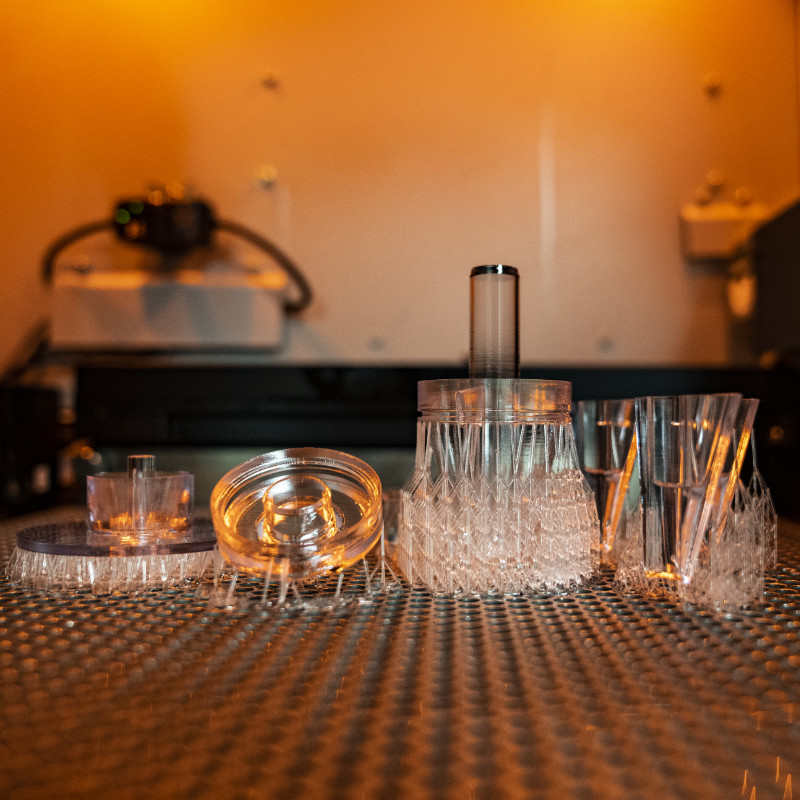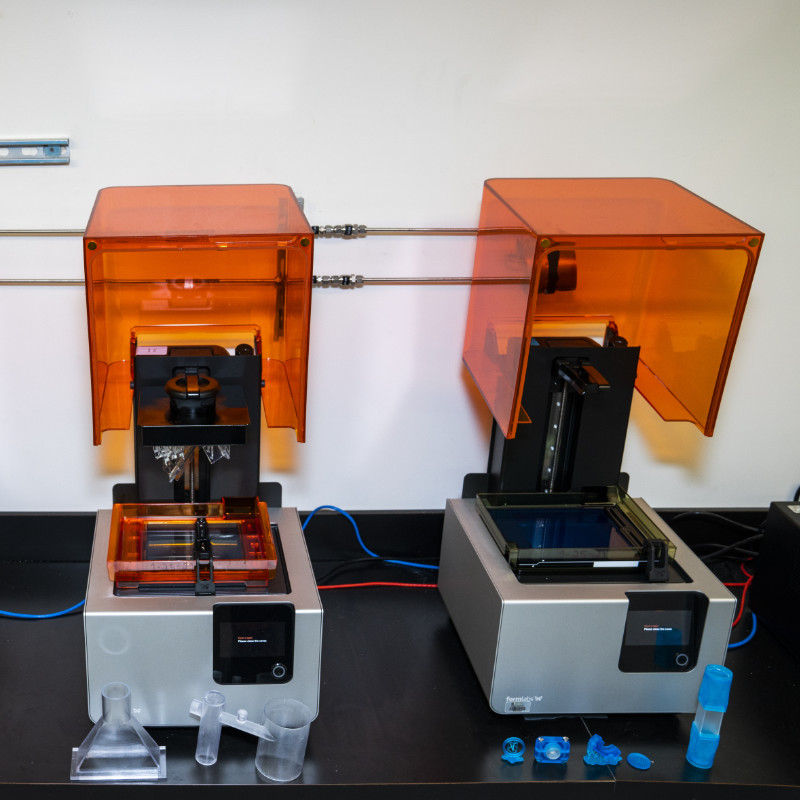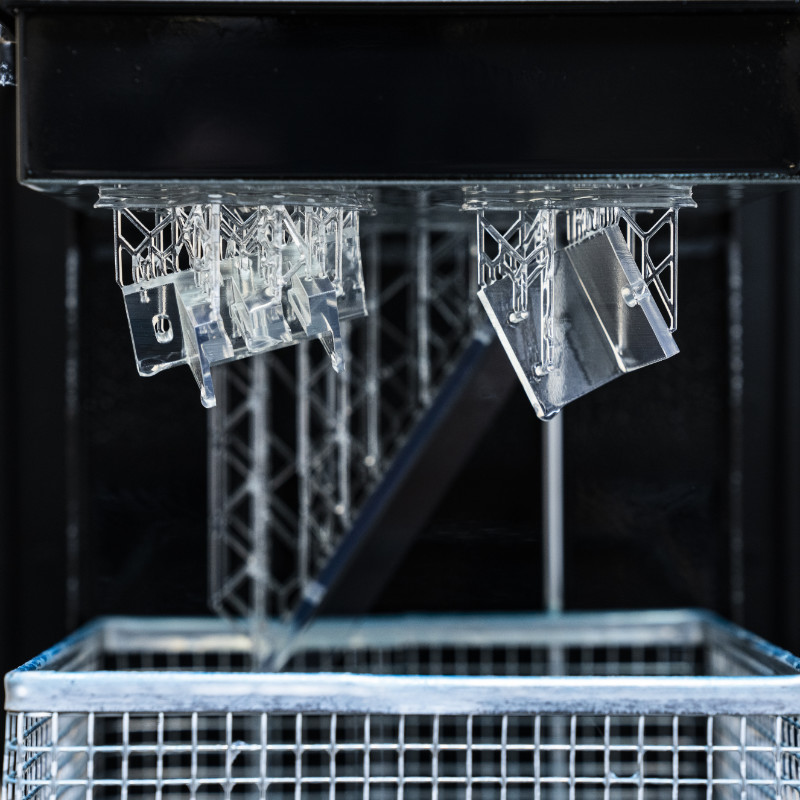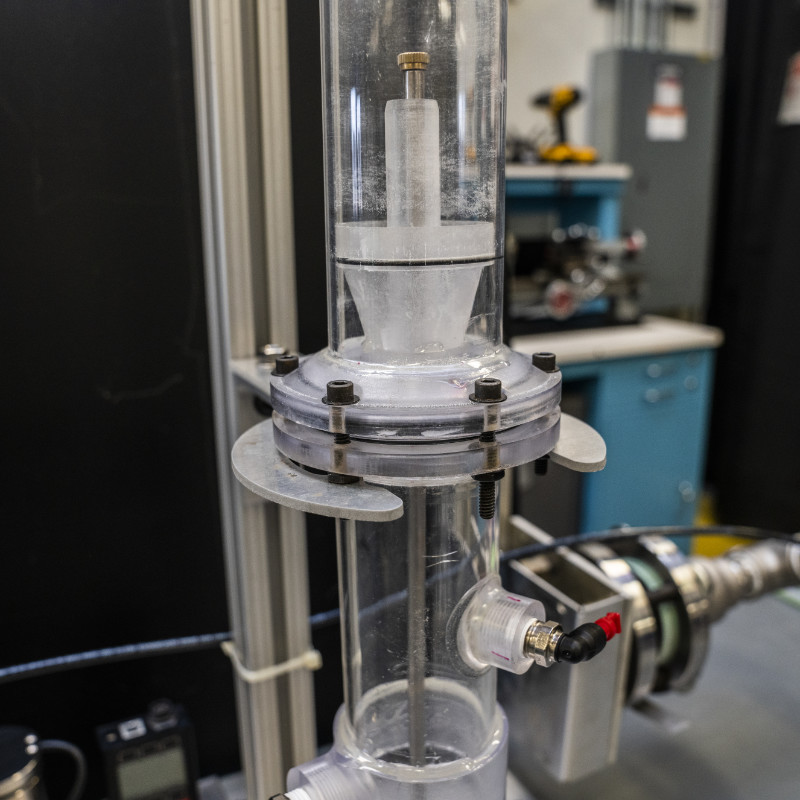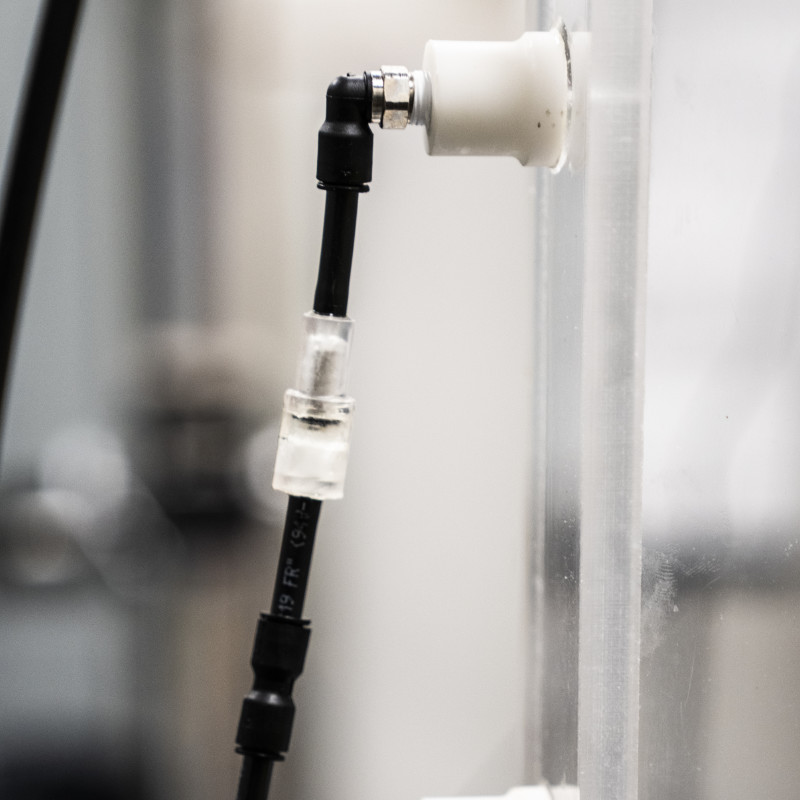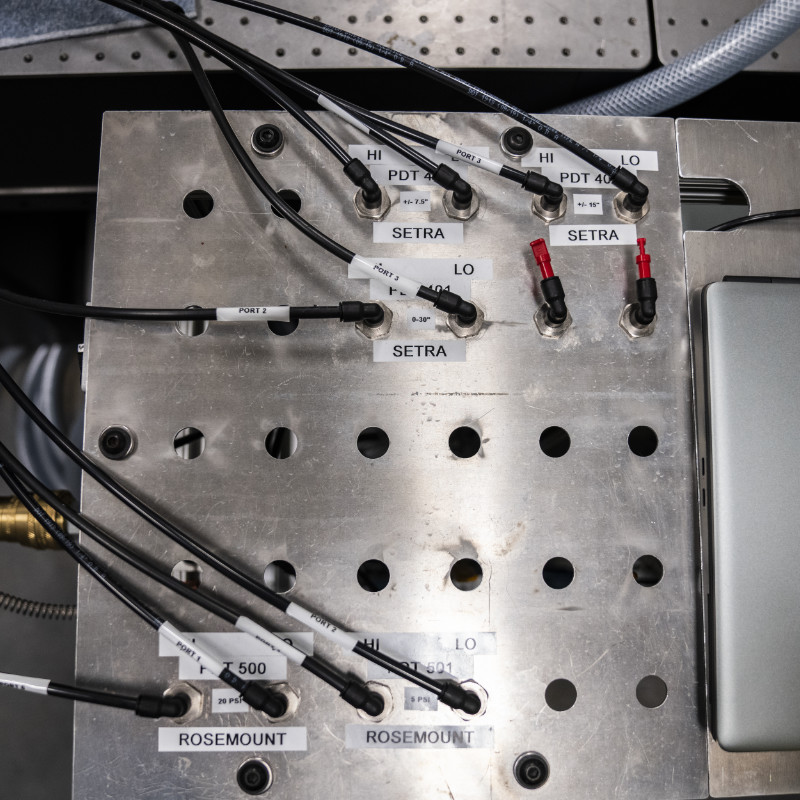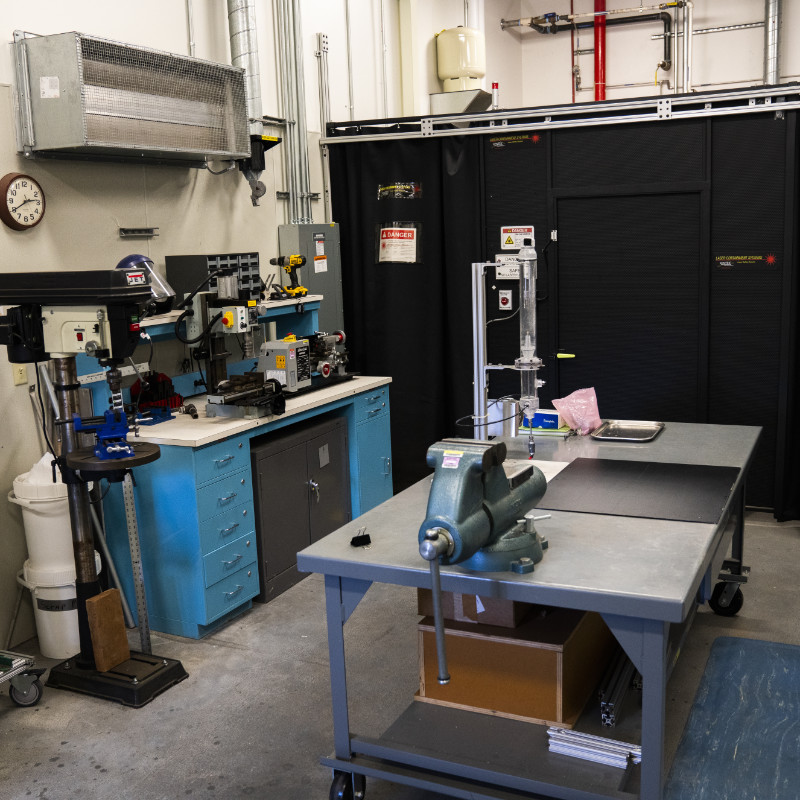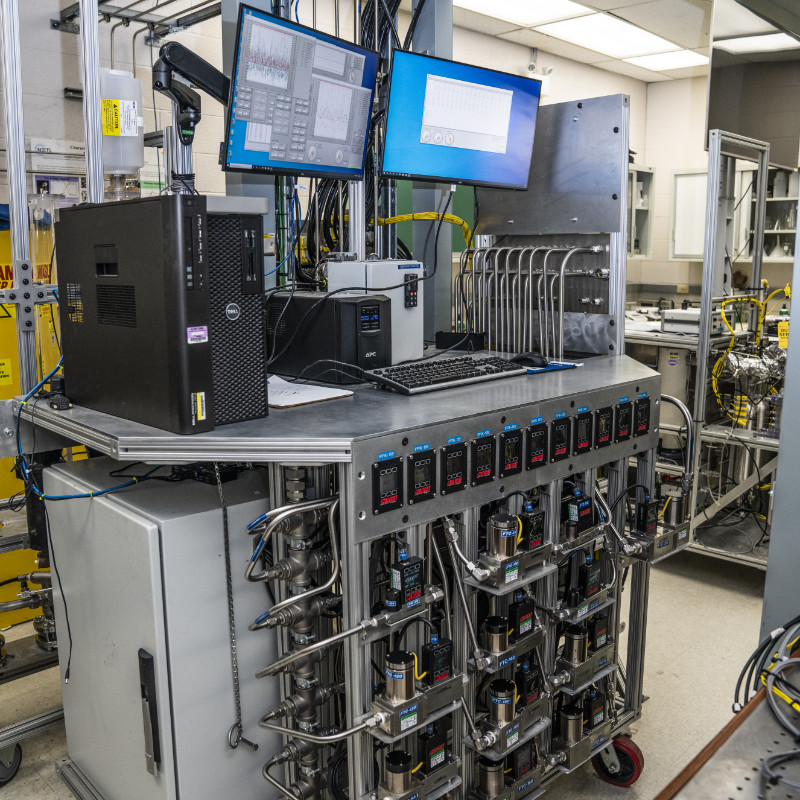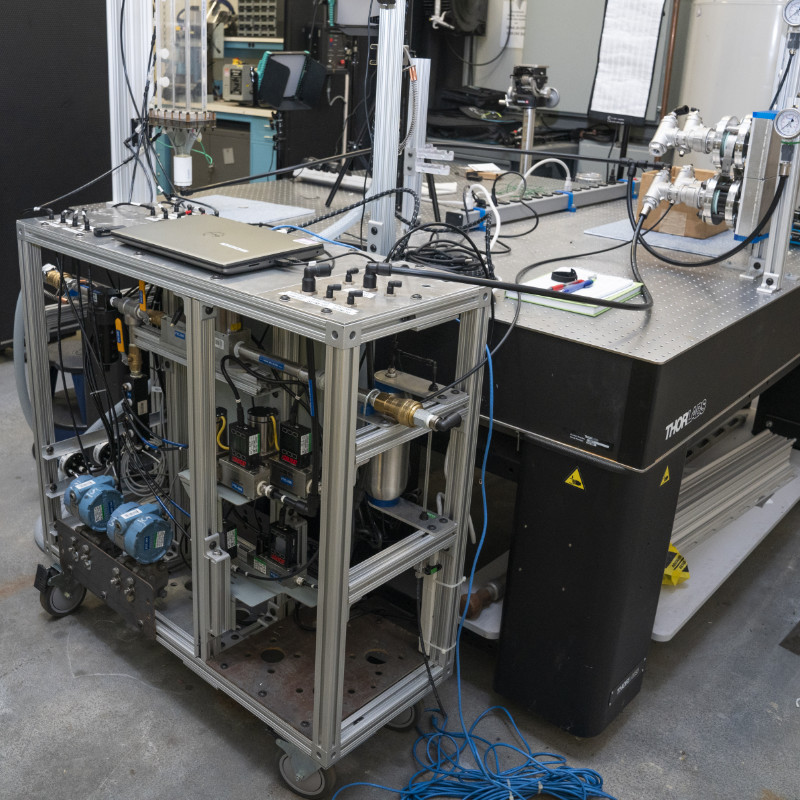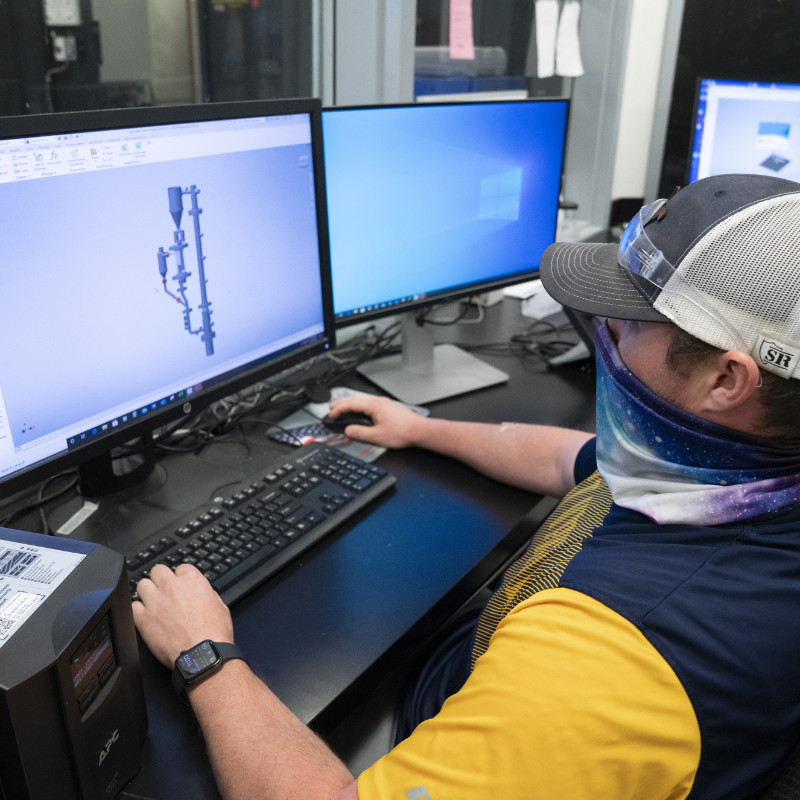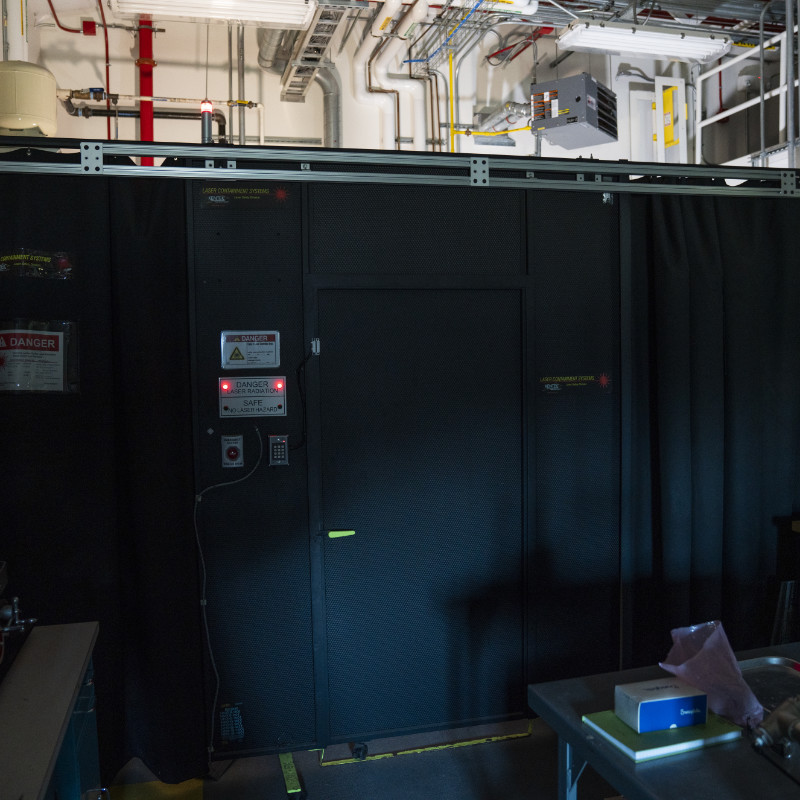Home » Research » Laboratory Studies » MFAL Design and Fabrication Team
MFAL Design and Fabrication Team
MFAL relies upon a small group of research engineers and scientists to conceptualize, design, fabricate, and operate its research projects. This small group of professionals allow MFAL to quickly respond to its researcher’s needs, as they arise, in a prompt professional manner.
This team is experienced in physical and operational aspects of multiphase flow systems. They also have over 40 years of experience in 3D design and fabrication of traditional piping systems, structural systems, and custom research equipment/systems. This team is able to leverage over 20 years’ experience in 3D printing to design the individual parts in such a way, as to allow the rapid production of these components on our 3D printing systems. Next, they can clean, polish, clear coat, and assemble these 3D print parts to produce the clear flow systems utilized extensively in the MFAL group. The engineers are also experienced in more traditional fabrication methods and techniques including CNC waterjet machining, milling, turning, drilling, tapping, and sheet metal bending. All of this allows MFAL to be a completely self-contained team of expert designers/fabricators who can respond quickly and efficiently to the needs of the research work underway at our facilities.
Hardware Capabilities
Form 2 Printer – Our Form 2 printers give us the ability to print in different resins that have different properties. This allows us to print transparent, tough and rigid designs depending on the needs of our researchers. A clear resin could be used to create a more transparent finish where a white rigid resin could be used to tap for a Swagelok pressure tap. We choose our resin type based off the researchers needs. There are 3 of these printers located at our Morgantown Lab.
ProJet 7000 Printer – This printer has a larger print volume which gives us the ability to print a more singular, finalized design as well as larger parts. A smaller print volume requires the parts to be printed separately and joined together, usually by methods of flanges or epoxy. This printer also allows us to print in larger quantities. Flanges or pressure taps that can be used in multiple systems can be printed in bulk to have readily available.
These printers give a huge advantage on being able to create unique designs and look at parameters that may not be able to be constructed by conventional methods. They give us the ability to cut down manufacturing time as well as make quick turnaround re-designs without losing much operating time.
OMAX WaterJet – The Omax CNC waterjet uses a high pressure water stream mixed with an abrasive material to cleanly cut through metal and other materials. It can be used to cut very unique and custom designs in multiple materials like metal and plastic. We cut steels and aluminums ranging from 1/16-in to ½-in. It is a great piece of equipment to design custom housings for pressure transmitters and flow controllers. It allows us to create supports for our systems that can safely handle the load of the rig plus the material being used.
Manufacturing and Fabrication
We have the ability to take our 3D printed designs and integrate them with metals, plastics, and acrylics.
- Metals can be drilled and bent to create custom housings for equipment.
- Cutting of plastics to size for vessel bodies.
- Welding of acrylic plates to create transparent vessels.
- Drilling of these materials to create taps for measurement instruments like pressure transmitters and thermocouplers.
- Milling, turning, drilling of metals and plastic.
These tools give us the flexibility to create very unique and custom designs and experiments and collect data at virtually any spot on the system.
Measurement Capabilities
Our labs have been outfitted with a stationary or portable cart that gives us the ability to measure and collect different data types from our systems. These carts can provide flowrates ranging from 0-2000 SLPM and we also have ability to collect low and high speed pressure data. We can also measure temperatures. This equipment is tied back into a computer on the cart and is controlled by a LabVIEW program.
Software
Autodesk Inventor – Inventor is a computer aided design software (CAD). This is where we create our custom parts that will be 3D Printed. We can provide detailed 3D design that is modular, adaptable and able to be manufactured quickly. From these parts we can create assemblies to get a concept of how the finished design will be built and supported. We can also use Inventor to create 2D sketches to provide our clients with dimensions and the ability to look at specific areas of an assembly.
3D Studio Max – 3DS Max is a comprehensive 3D design, modeling, animation and rendering software.
3D Sprint/Preform – these are our softwares that we use with our Projet and Form 2 printer to prepare and optimize our design for printing. Here we can change orientation and support structure of the part/assembly to optimize the finished print.
Design Process
Preliminary Design – Our designers and scientists meet with research personnel to determine the needs of the research project. By having personnel who are well versed in the physical systems, theoretical functions, and operational characteristics of multiphase flow research we have the unique ability to guide the preliminary designs of projects in directions that will save time and effort in achieving the final research goals.
Detailed 3D Design – The research engineers then take the components, parameters, and layouts generated in the preliminary design stage and move into detailed design. Here they employ multiple custom design programs and custom design/fabrication techniques that have been developed over the years to quickly produce a design that is modular, adaptable, able to be manufactured quickly, and meets the functional needs of the research team. Once a 3D model of the experimental rig is completed, the research engineers/scientists meet again with the researchers to discuss the design and define the needed changes to achieve the final design.
Fabrication Stage – Once the design is complete our inhouse research engineers then start the process of manufacturing the custom designed products and purchasing any off the shelf components that are needed. The manufacturing of custom designed components typically includes 3d printed parts and machined metal parts:
- The 3D printed parts are produced using stereolithography (SLA), employing multiple resins that have necessary material characteristics for the individual parts. These material characteristics usually fall into 3 main categories, transparency, toughness, and rigidity which the engineers have specified during the design stage. Once the parts are printed, they need to be cleaned and sanded to remove all supports necessary for printing. Once all parts are sanded, the transparent parts require additional polishing and coating to enhance the transparency of the parts. After all the parts are prepared, the engineers can then perform all tapping and assembly needed to produce the components for the research rig.
- Some components of the research rigs are made of metal. These components were designed in the detail design stage and are fabricated using CNC water jet cutting, milling, turning and bending. All equipment needed for these operations are either in the MFAL project or are readily available in shared research spaces. Our research engineers are experienced in all these operations and can perform all work. This leads to the very rapid production of the research components as no outside work is typically needed.
Installation and Shakedown – Once the individual components are assembled/fabricated, they are all brought together and installed in one of our two laboratories by our research engineers/scientists. The components are then connected to our multiple pre-existing research support systems. These systems include multiple gasses, flowrates control/recording, pressure sensing/recording, and over pressure protection. Once installation is complete our engineers/scientists will put the rig through it’s needed tests to verify operations meet the requirements needed by our researchers. Any problems that are found are quickly addressed by the research engineers and scientists using the same process outlined above.

